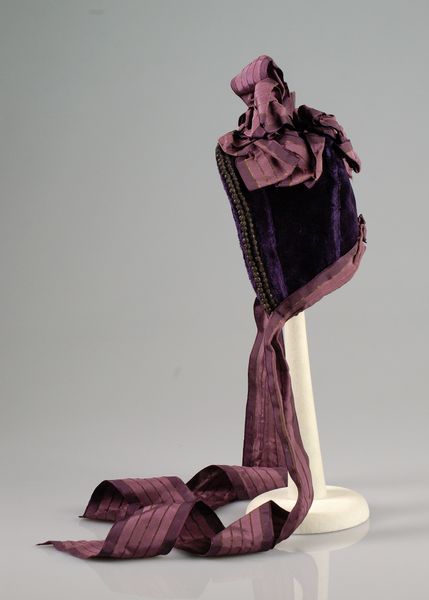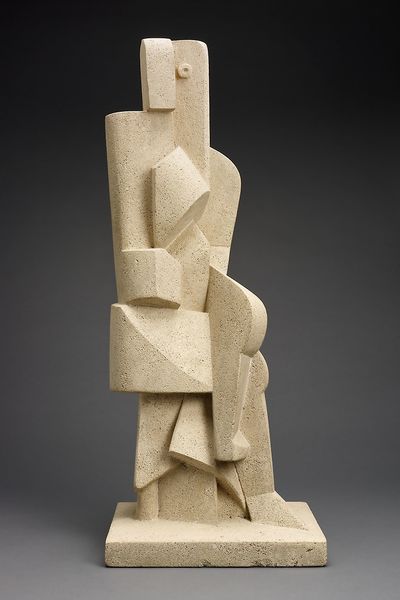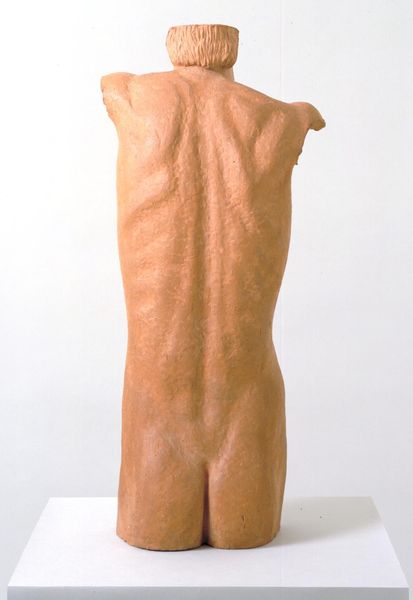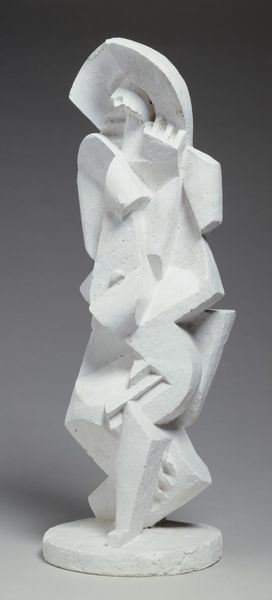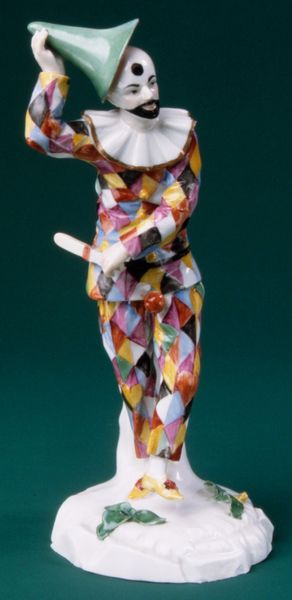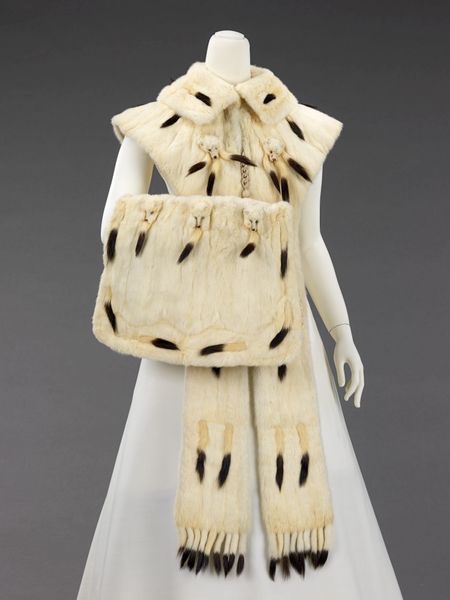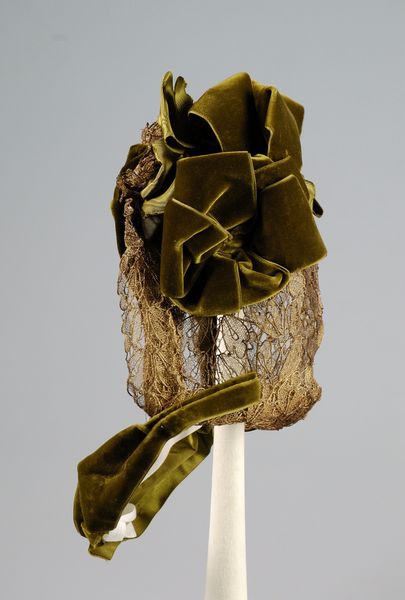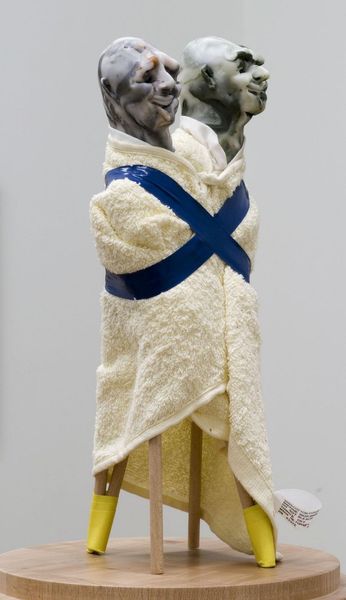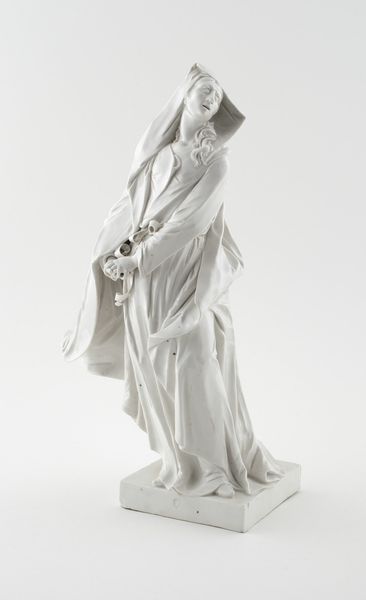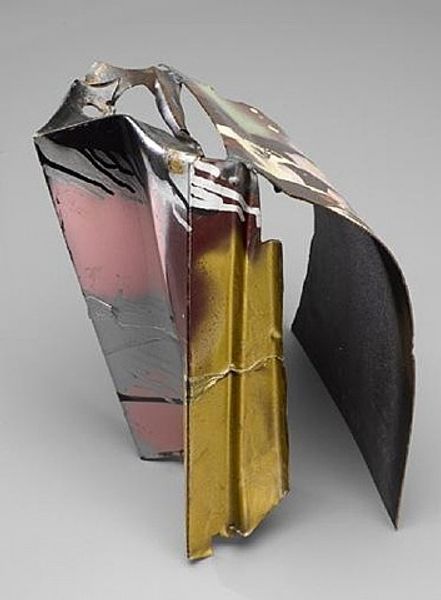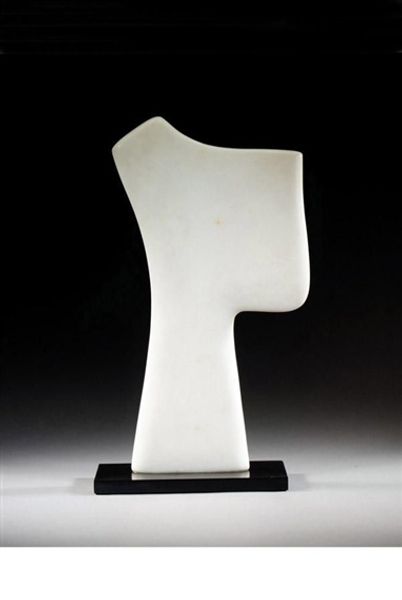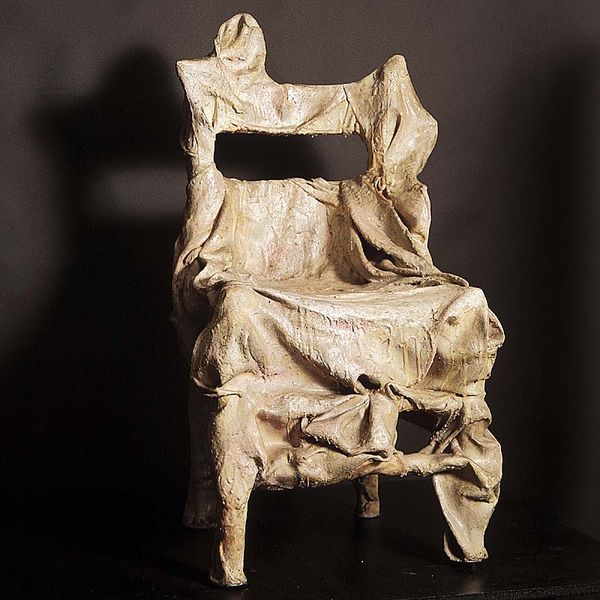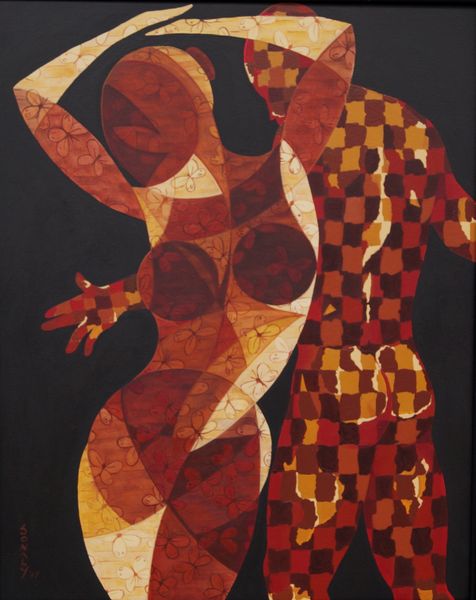
Dimensions: object: 395 x 290 x 160 mm
Copyright: The Work of Naum Gabo © Nina & Graham Williams/Tate, London 2014 | CC-BY-NC-ND 4.0 DEED, Photo: Tate
Editor: This is Naum Gabo's 'Model for 'Constructed Torso''. It's made of what appears to be cardboard. The angularity and the material give it a surprisingly raw, almost industrial feel. How do you interpret this work? Curator: Gabo's Constructivism sought to redefine sculpture's role in society. Consider the socio-political context: post-revolutionary Russia where art was meant to serve the proletariat. Does this model, with its geometric abstraction, fulfill that mandate, or does it propose a new aesthetic entirely? Editor: It's interesting to consider how abstraction relates to accessibility. It feels complex, maybe even inaccessible, despite its simple material. Curator: Precisely! And how does the 'torso' form, traditionally associated with classical ideals, function within this revolutionary aesthetic? Is it a rejection, a reinterpretation, or something else? Editor: I hadn't considered the classical reference. That adds a whole layer of meaning. Thanks! Curator: Indeed. It's a reminder that even radical art engages with, and reinterprets, its predecessors in complex ways.
Comments
tate 8 months ago
⋮
http://www.tate.org.uk/art/artworks/gabo-model-for-constructed-torso-t06972
Join the conversation
Join millions of artists and users on Artera today and experience the ultimate creative platform.
tate 8 months ago
⋮
Gabo's construction of a three-dimensional figure is achieved through intersecting planes without the structure having great mass: rather like load-bearing metal 'H' beams which carry great weight but themselves have little bulk. Gabo's adoption of the stereometric system, in which volume is indicated through being bisected rather than surrounded, is thus structural and descriptive. The relatively unarticulated neck and chest areas of Gabo's earliest constructed heads were radically addressed in the subsequent constructed heads and torsos and 'Model for Constructed Torso' marks the attempt to articulate most of the figure in stereometric planes, and in a cubist idiom. Gallery label, August 2004
